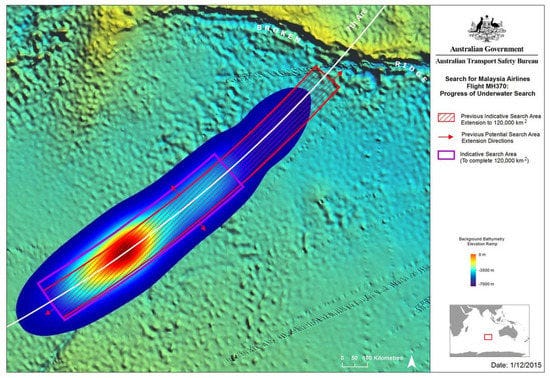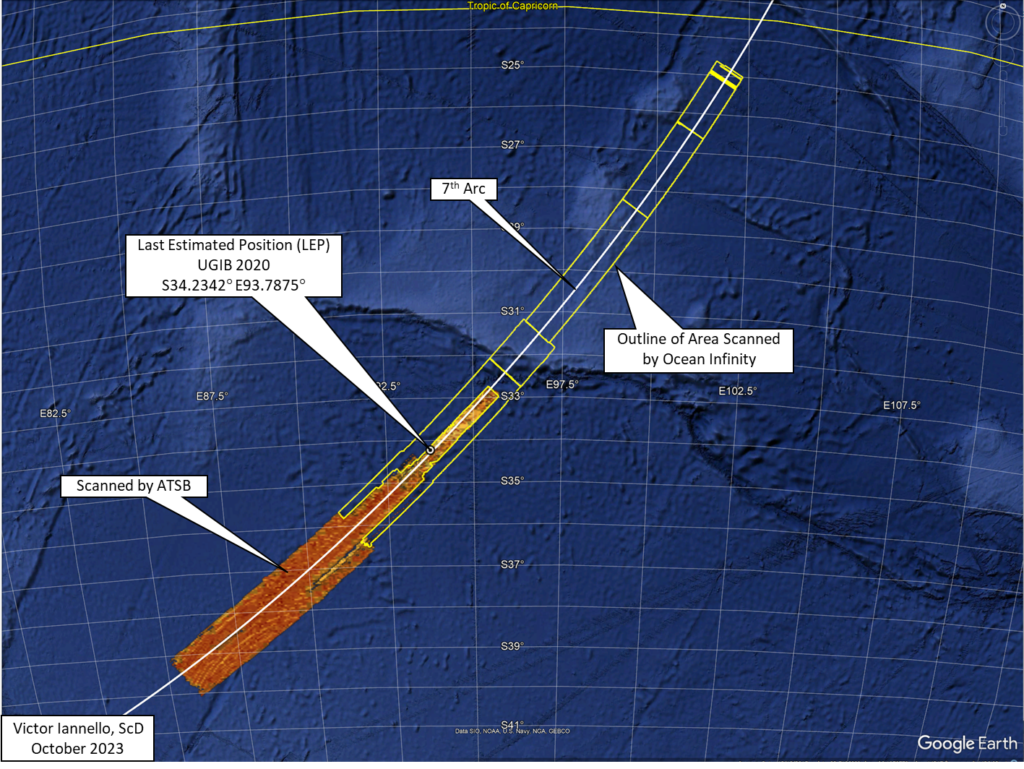First MH370 Search Puzzle Solved [S2Ep28 video]
We now know where Ocean Infinity will look, and why
On Sunday, February 23, 2025, the Ocean Infinity Search vessel tasked with carrying out the third seabed search for MH370 arrived in the search area. Its position gives us a solid answer to one of the biggest mysteries hanging over the search — namely, where are they going to look and why?
In the last episode, Ocean Infinity’s designated search vessel, Armada 78 06, had left Mauritius and was steaming towards the area of the southern Indian ocean where the plane is believed to have crashed. Now, a week later, it has completed that voyage after threading its way between storms across some 2000 miles of ocean.
What we didn’t know last week was where exactly the ship was going to go, because we didn’t know what the analytical basis for the search was going to be.
Now we understand both.
As we’ve talked about in previous episodes, the satcom data that officials used to work out where the plane went doesn’t just tell you a lattitude and longitude, like a GPS. Instead, it tells you if any given route that you can come up with matches the data or not. Theoretically, there are an infinite number of routes that you could take into the southern Indian Ocean that would match the data, — you could fly straight and fast, or you could fly slow in a curve, but if you assess them statistically, it turns out that most of those routes are very unlikely.
What you wind up with is a probability distribution that looks like this:
Australian search officials used this probability distribution to lay out a search area that the Dutch survey company Fugro started scanning in 2014. After they searched 120,000 square kilometers, the American company Ocean Infinity carried the search onward. The total area searched looks like this:
These two searches covered really all the places the plane could reasonably be expected to have gone. Once they ended without success, Malaysia announced that unless someone came forward with compelling new evidence of where to look, they weren’t going to authorize any new searches.
And to make a long story short, no such compelling new evidence has emerged in the meantime.
But, various independent researchers have been looking at the data. And among other things, they’ve been wondering: what other sources of information do we have that might suggest where to look?
One such source of information is drift modeling — studying how ocean currents have historically carried drifter buoys around in the Indian Ocean, and comparing that to where pieces of MH370 washed ashore in the western Indian Ocean starting in 2015.
Various researchers have looked at drift models and noticed that there’s an interesting kind of a sweet spot around 35 degrees South latitude. If the plane crashed further south than that, you’d expect that some debris would wash ashore in Australia, and none has. If the plane crashed further north, then you’d expect debris to have started washing ashore in the western Indian Ocean sooner than it did.
So this would be a good place to look. But there’s a problem: this area has already been searched in both of the seabed searches. However, there’s a possibility that the wreckage was there and simply wasn’t noticed. There is some very rugged underwater terrain in the vicinity that could have shielded the wreckage from detection.
In fact right now based on the latest position information it looks like the ship is parked right over an underwater canyon that had only been partially searched before.
Now this is an eminently sensible analysis of where the plane might be, but until today, we didn’t know if this was the logic that Ocean Infinity was planning to follow.
Now we do. This is indeed the area that Ocean Infinity is currently in the process of searching. And remember, it will only scan a relatively small area of 15,000 square kilometers. That means that once this scan is done, if they haven’t found it by then, they really have no other ideas about where to look.
And that opens the exciting possibility that one of officials’ baseline assumptions was wrong. And by revisiting it, we can break open a case that has been stagnant for 11 years.





You aren't correct "On Sunday, February 23, 2025, the Ocean Infinity Search vessel tasked with carrying out the third seabed search for MH370 arrived in the search area."
The ship is due to arrive in Fremantle, on 5 March, refuel, and then depart for the search area on the 6th March.
what about the backseat screen where people sometimes enjoy to look at the airplane path....if diverted its showed, if off much complaints on board.
anyone on board mind to send a message or so? it s very popular Line app in Asia, if sending a message without network it stays pending untill a hit, which was suppose to be over penang by the 2nd official on board.
well....maybe it never crossed to south india sea